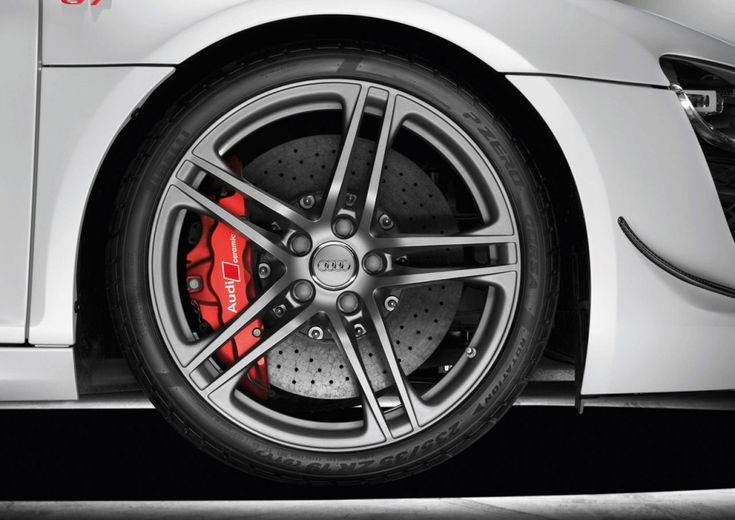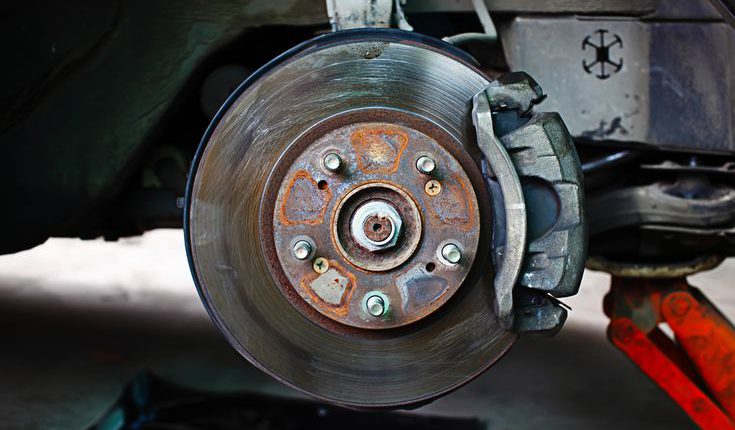How To Make Car Brakes Last Longer?
The parts on cars all have different purposes and times of use. Knowing the lifespan of car components will help drivers have a safe and convenient journey. A car that can safely drive is thanks to a combination of many parts and components that work in top condition. The average lifespan of parts on a car is different, especially parts that are prone to wear like brakes.
According to statistics, for every 16,000 – 25,000 km, the driver will press the brake more than 75,000 times. This number shows how often the brake is used and how important it is during driving. Automotive technical experts say that brakes are the most important part to ensure the safety of your car. In many cases, the car is unsafe, even accidents related to brake problems such as brake failure, brake lock, fluid leak, etc. So “How to make car brakes last longer?”
In the article, we will share with you a few simple tricks that can help prolong the brake lifespan, ensuring parts last longer before needing replacement.
Why Do Car Brakes Wear Out Faster?
Frequently driving with worn car brakes can cause damage to related components, even though this contains many unpredictable risks. Although an important part of a car, the brake system is not paid much attention. Because the car brake is located in a hidden position, behind the wheel, it is difficult for car owners to observe.
Not to mention, worn brakes are often difficult to realize, braking force almost does not change too much. Only when the gap between the two brake pads is too large to slow down or stop the vehicle can the driver clearly feel this sign. What are the reasons that cause brakes to wear?
- The driver does not check and maintain the brakes periodically.
- There was a collision that causes the brake disc to deform.
- The car brake pedal is designed too small.
- Brake fluid is contaminated with water and impurities
- Brake pad spring damaged
- Cylinder malfunction, damaged rubber gasket, warping.
- The brake drum is rusted and worn out.
In addition, the reality is your front brake wears out faster than the rear pad. That’s because the front of your car has more impact during braking than the rear, causing them to wear out faster. Over time, heat and friction wear away until only a little is left to do the job effectively. Speed also plays a determining factor in brake longevity. Pressing the brake when you are at a lower speed requires less force than applying the brake at a higher speed. This is one of the reasons why you may find your brake pads wear out faster.
Driving with a bad brake system can cause very serious accidents. In this case, how long can you drive on bad brakes? In general, brake pads need to be replaced every 50,000 miles. Some need to be replaced after 25,000, while others can last 70,000 miles – it all depends on the condition of your brake system.
How To Make Car Brakes Last Longer?

The average life of brake pads is about 120,000km – 150,000km, equivalent to about 3 – 5 years of use. However, with frequently heavy-load cars, the driver presses the brake pedal continuously, and the brake pads will have a shorter life. The performance of the brake system plays an important role in the cars, deciding the level of safety when an unexpected incident occurs.
Therefore, car owners need to pay attention to changes in the brake system such as squeaking, and screeching when stepping on the brake pedal. Ideally, car owners need to maintain the rear brake system for at least 20,000 km for the safest operation of the car.
What should we do to make car brakes last longer? The answer is surprisingly simple. One of the simplest ways to increase the lifespan of your brake is to change the way you drive. According to experience, drivers who want to increase the lifespan of brakes need to know that the brakes provide stopping force by creating a large amount of friction and heat. It also means that the brakes will wear out a bit after use. Let’s follow the easy tips to increase the brake life:
Make the gap with other vehicles when driving.
Driving too close to the vehicle in front is not only more dangerous but also is a major cause of faster-worn brakes. The more closely you follow another vehicle, the more often you have to use the brakes, even emergency braking. Therefore, make sure you have enough distance to make it easier to stop and reduce brake wear. You should do it at night or inclement weather. This not only reduces the risk of an accident but also increases the life of the brake.
Replace brake fluid.
To ensure that your brake system works effectively, it is essential to check and maintain the car’s brakes, especially changing the car brake fluid.
According to experts, brake fluid contains corrosion inhibitors and antioxidants. Over time, the structure of these substances breaks down, leading to metal corrosion and accumulation of deposits that disrupt the flow of brake fluid. Brake fluid is responsible for supporting the transmission of force from the brake pedal to the brake system components. In addition, brake fluid also has the effect of lubricating, reducing friction, and preventing corrosion, helping cars operate smoothly.
Even though the brake is a sealed system, steam can still get through the micro-holes in the rubber hose and sealing ring. Meanwhile, brake fluid is easy to boil due to its high ability to absorb moisture, causing brake pressure to decrease and braking efficiency is poor.
In addition, If you don’t change the brake fluid periodically, it can cause damage to the brake system such as strange noises, worn-out, and brake failure.
As per the manufacturer’s recommendations, the brake fluid needs to be changed every 2 years or every 30,000 – 40,000 km. If your car is constantly moving in dusty, humid conditions or using the brakes continuously, drivers can change the brake fluid earlier.
>> Read more: Brake Fluid Leak: Top Causes and Symptoms to Know!
Don’t make your automobile overload.
Overloading any vehicle will alter its ability to stop and possibly damage the braking system. When you overload the vehicle, it will affect the speed of the brake pads and shoes that press on the rotating disc to stop the vehicle. Continuously overloading can result in damage to the rotating disc, which can lead to serious accidents and wear brake. Try to remove any unnecessary items and avoid carrying more than your vehicle can help your brake operate effectively.
Cooling your brake.
Braking systems at high temperatures for long periods of time can degrade function or even damage components over time. That’s why brake cooling is so important. Braking will overheat in many situations, it can be after going downhill, driving on a winding road, or at high speed. Basically, whenever the brakes are applied at high speeds or repeatedly, your brakes become hot and transfer heat to components such as brake calipers, pads, rotors, and brake fluid.
How can we cool the brake system? You should drive at a reasonable speed (effectively 45mph) without using the brakes for an extended period of time, such as 3-5 minutes. The brake will automatically cool down. The air that flows over the rotors and around your brake calipers will effectively cool the brakes as long as they are not in use. If you are not in an area where you can drive without using the brakes. You need to slow down and apply the brakes gently.
Why don’t you try the engine brake?

Don’t underestimate the effectiveness of using engine braking. When going downhill, especially for large trucks, some of this weight tends to drag the vehicle down. Vehicles often accelerate unintentionally, braking is an inevitable need of drivers. Instead of pressing the brake pedal all the way, try braking the engine and let the engine do all the work!
Pressing the brake in this case will be a failure. Because then, the kinetic energy of the vehicle will be converted into heat to warm up the brake system. In this case, the best option is to use the brake engine. The vehicle must be in low gear (2 or 1 depending on the actual slope and vehicle load) to take advantage of the engine’s self-braking ability.
The lower the number, the greater the self-braking ability. The self-braking force of the engine is due to the compression pressure in the cylinder created. It’s like when we push the lever of a pump with our hands. When going downhill, the engine works in idle mode, at this time the movement from the wheel is transmitted back to the engine, causing the piston to compress the air in the cylinder to create braking force.
Maintenance is very important.
Properly servicing the brakes can prolong the life of parts that are prone to wear and tear. Components may occasionally need to be removed, cleaned, lubricated, and reassembled. This keeps the brake system working efficiently and safely and ensures that all system components are in good operation. A “healthy” brake system will of course have a long life.
>> Related post: 4 Simple Ways to Make Brakes Last Longer
In Conclusion
One of the most important systems in cars, as well as vehicles on the road, is the brake system. Hopefully, a topic about “How To Make Car Brakes Last Longer?” that Car From Japan has just shared will help you have more skills in the process of using your brake in a car! We hope you have more interesting experiences in many other categories on the website.














